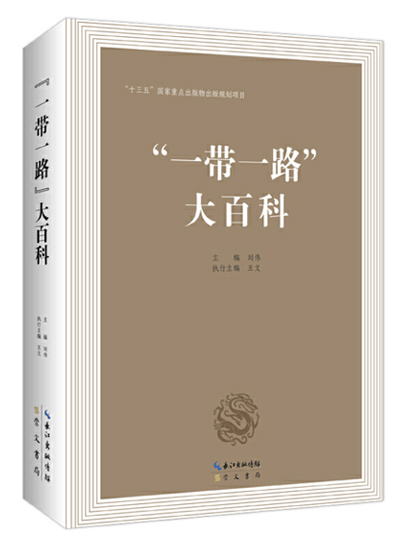A full picture of Belt and Road

The “Belt and Road” Encyclopedia
The “Belt and Road” Encyclopedia, with detailed content in 48 sub-categories and 1,024 entries, displays a panoramic view of the Belt and Road (B&R).
Edited by Liu Wei, president of Renmin University of China (RUC), and Wang Wen, executive director of Chongyang Institute for Financial Studies at RUC, the encyclopedia consists of seven sections, including historical evolution, economic geography, policy communication, infrastructure connectivity, trade smoothness, capital financing, and people-to-people exchanges.
As the first B&R encyclopedia in China, this book fills in the gaps in relevant research. It has three prominent features. The first is a strong contemporary update. The B&R itself is under way, and the contents included in this encyclopedia are up to the end of 2019.
The second feature is the stereoscopic display of content, ranging from policy communication and trade smoothness to infrastructure connectivity and capital financing. The book includes 63 policy documents, 34 communication platforms, 14 cooperation mechanisms, and 18 parallel initiatives, and incorporates infrastructure construction projects, economic cooperation zones, and bilateral free trade zones. All these elements come together to portray a vivid three-dimensional image of many countries working together to build the B&R.
The third is the panoramic sight of the B&R. The book includes 1,024 entries, covering almost all the content involved in the joint construction of the B&R so far. It provides basic supporting data and references for domestic researchers, for all participant states, businesses, and business groups, and for other states that have not been engaged in the initiative.
Impacted by the COVID-19 pandemic, the global economy is undergoing a recession rarely seen over the past century. The post-pandemic economy’s effective recovery is a major challenge facing all countries. It depends not only on major countries’ domestic fiscal and monetary policies, but also on the continued promotion of economic globalization.
Compared with the past, future globalization will take on a new look. It will no longer be dominated by America alone, but by East and West together, or even by emerging markets. Furthermore, it should focus on the real economy rather than one-sided financial expansion. In addition, it needs to better deal with capital’s profit-seeking behavior, the development of related countries, and the well-being of middle- and low-income groups.
The proposal of the B&R and its joint construction exactly follow this need and basic direction, which is therefore widely welcomed by emerging economies and developing countries. It is becoming a strategic consensus of emerging markets and beyond. In this context, the global economic recovery in the post-pandemic era needs the B&R more than ever.
Zhou Xiaojing is a research fellow from Chongyang Institute for Financial Studies at RUC.
Edited by YANG LANLAN

 PRINT
PRINT CLOSE
CLOSE